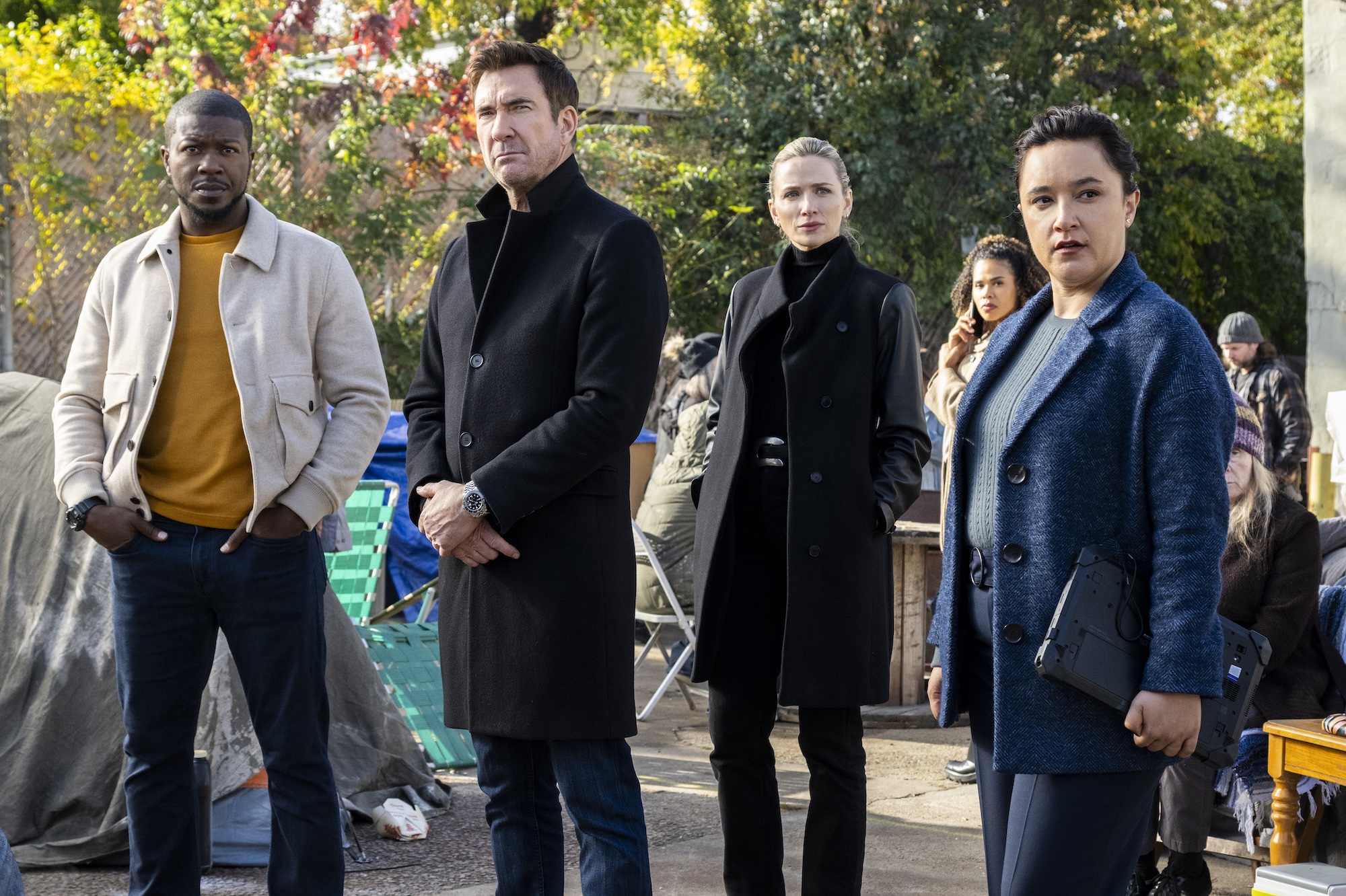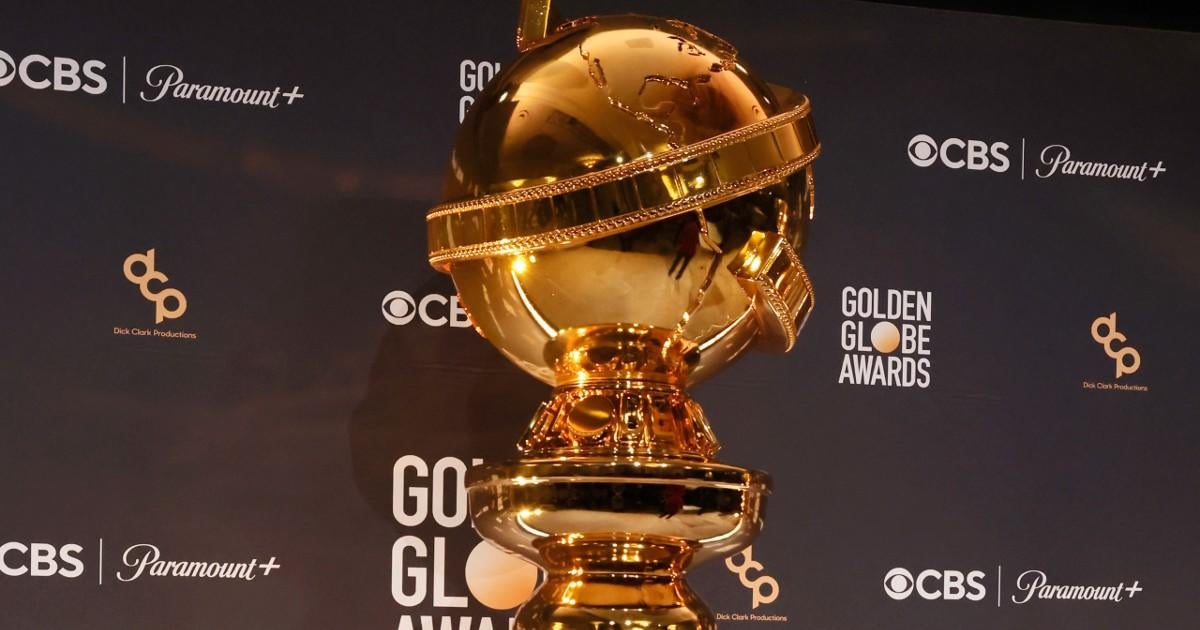The Future of Film May Just Be Old Movies
In late January, I visited Lincoln Center on the Upper West Side of Manhattan to watch an infamous, practically unstreamable film. The Lincoln is the hub of old-guard, uptown prestige and culture and the headquarters of the New York Film Festival. On Saturday night at 8:45, prime time for pregaming before a night out, it’s maybe the last place you’d expect to see 20-something socialites. Yet the line outside the Walter Reade Theater on West 65th was full of them, braving the late-winter cold and a light rain for a sold-out screening of Pier Paolo Pasolini’s 49-year-old Italian snuff film, Salò, or the 120 Days of Sodom, a modernized adaptation of Marquis de Sade’s 18th-century novel. The film is a critique of fascism that at one point features graphic depictions of young, beautiful captives eating bowls of their own shit. There is very little in the way of arc or character development, and—spoiler alert for anyone who had other plans that Saturday night—the film ends abruptly following the sadistic, gleeful slaughter of the prisoners.
It’s far from blockbuster fare. But this crowd was not one I would’ve recognized from 10 years earlier, when I hit sparsely attended weeknight showings of Antonioni or Imamura or Godard with mostly older moviegoers who drank coffee or dozed off. The Lincoln Center crowd was full of nerds like me, for sure—bespectacled, wearing beanies or keffiyehs and holding dog-eared paperbacks on their laps—but most of the Salò audience looked like they had taken the train down a few stops from Columbia. They sat in large, diverse groups and sipped on cans of wine or beer, huddling and talking excitedly with mouths full of popcorn before the lights went down, after which they were rapt through the entire film. It was surprising and completely absurd.
It was the culmination of a change I’d noticed developing over the past decade. The types and number of repertory films being shown are changing, as are the types of people attending them. Since the pandemic, I’d heard the oft-repeated narrative that fewer movies are being released in theaters, movie theaters are dying out at an unprecedented clip, and these are harbingers of streaming ultimately killing the moviegoing experience. But it didn’t feel that way that night at the Lincoln Center. It felt like I was a part of something—a culture or a phenomenon. Both a random event and a surprisingly coherent evolutionary step in a burgeoning movement. I wondered whether this was just my anecdotal experience in New York or a larger shift that could portend a future for moviegoing across the country.
There’s a word for these screenings of old movies: repertory. At a base level, it’s defined as a place where things can be “found or discovered.” The term is often associated with the stage; at a repertory theater, a resident company regularly puts on a staple rotation of old plays. But in the cinema, it essentially means revival—which often takes the shape of showing old movies in movie theaters, a practice that is almost as old as cinema itself. It comes in many forms. Those Wednesday screenings of Godard. A showing of Heat with Michael Mann, Al Pacino, and Robert De Niro on hand for a Q&A. A Stop Making Sense dance party at an IMAX theater. An outdoor Summer Screen presentation of Ferris Bueller’s Day Off in Tompkins Square Park. All of that—and more—is repertory.
The challenge that has always faced repertory cinema is access—the perception that if people have an easier, more convenient way to see a film, they will take it. Going to the movies is a hassle and an expense, no matter where you live. If your goal is to take in a piece of content, why subject yourself to that schlep when you could simply watch it at your own pace, in peace, at home? From virtually its inception, repertory has faced existential threats from a series of at-home viewing options: television, cable, VCRs and DVD players, today’s digital streaming apps. But each time, repertory cinema has proved its resilience, its demand, and its financial viability in spite of these inventions. Its survival speaks to the essence of cinema and what many want out of it—not to simply consume a piece of content, but to get something deeper, richer, and more communal.
The fortunes of repertory houses in film hubs like New York and L.A. have risen and fallen with the times, but repertory programming has always maintained a presence in older theaters, like Film Forum in the West Village, and more recent additions to the landscape, like Quentin Tarantino’s refurbished New Beverly in L.A. The late 2010s and early 2020s saw a shift with the opening of small, immediately popular theaters that have outsize cultural footprints, like the Metrograph on the Lower East Side, the Roxy in Tribeca, and the Vidiots Foundation theater in L.A., which all feature repertory screenings. At the same time, Austin-based Alamo Drafthouse, which has franchises in 27 cities—from Denver to Corpus Christi to Raleigh—became a national art-house chain with repertory theater threaded in its DNA. And smaller existing independent theaters and middle-American multiplexes began mixing more repertory programming in with their first-run offerings.
Matt Bolish has had a front row seat to what he describes as “an uptick” in interest in repertory cinema. He’s been working with Film at Lincoln Center, where I saw Salò, for 13 years and now serves as its vice president of operations, and he’s the managing director of the New York Film Festival. Bolish says that demand has increased dramatically in the past half decade, exploding in 2021 and 2022 as theaters reopened after COVID-19 shutdowns. Overall revenue for Film at Lincoln Center was up 14 percent in 2023, powered largely by repertory showings and the revenue from the multiple festivals the Center puts on every year, which was up 49 percent by itself. Bolish also points to shifting demographics, as the audience at that year’s NYFF trended younger. In the months following the fest, FilmLinc put on regular sold-out screenings that you might not expect to draw a crowd, like Béla Tarr’s 24-year-old Werckmeister Harmonies and retrospectives of the work of Mike Leigh and Edward Yang. “We started seeing a lot of people really engaging with our rep programs that were built around specific directors,” he says. “But it was young audiences, passionate audiences; everything was sold out the day the tickets went on sale.”
Even outside a major film hub like New York, there’s been an increase in demand in the past few years. Coolidge Corner is a four-screen art-house theater in Brookline, Massachusetts. Mark Anastasio is its director of programming—the person who selects and schedules the films the theater will screen. He’s found that the demand for repertory at Coolidge Corner has scaled up after the COVID shutdowns. “The increase in interest in repertory has been huge,” he says. “We’ve responded by screening more than ever.” From 2019 to 2023, repertory programming jumped from 10 to 30 percent of the theater’s total revenue.
:no_upscale()/cdn.vox-cdn.com/uploads/chorus_asset/file/25693461/950365438.jpg)
The trend also isn’t confined to art houses. Fathom Events is a distribution company that serves many roles in chain multiplexes, but one is as an intermittent repertory programmer. Its anniversary repertory screenings of the Lord of the Rings franchise or horror classics like Alien can be found rounding out the domestic box office top 10 in any given week. Fathom has put on a Studio Ghibli Fest in mall cineplexes and big-box theaters across the country for years. According to the company’s data, its top seven films in the festival ended up earning 142 percent more at the box office in 2023 than they did in 2022. “There’s a movement here in understanding your audience and what they want,” Fathom CEO Ray Nutt says. “You can take repertory content and repackage it … and it gets these kinds of results.”
COVID was once seen as a catalyst speeding the demise of the movie theater as a business model. But it now appears that the pandemic may have served as another kind of catalyst, one that has motivated a niche audience of passionate moviegoers to seek out more in-person theater experiences. Anastasio saw two complementary factors pushing younger people toward older movies right after theaters began reopening. “It was probably due to fears of illness, but our audience was solely younger people in that 18 to 30 demographic,” he says. “That was who was coming out, and all we had were repertory offerings because there were no new movies. And as soon as tickets went on sale, we spent two days with our website completely crashed due to the amount of traffic from people who had been cooped up for months trying to get on and buy tickets to these shows. That was eye-opening.”
The movement toward repertory, however, isn’t only because of sudden changes in taste or just a case of people wanting to get out of their homes after being trapped in them. On a grander scale, it’s a Darwinian adaptation to a grim landscape largely created by the cynicism and miscalculations of the major Hollywood studio system. Nearly every decision the studios have made since the turn of the century has inadvertently supported and strengthened the position of repertory cinema as a counterbalance in the industry.
A. S. Hamrah—a critic who once worked as a projectionist at The Brattle, a 71-year-old nonprofit repertory movie theater near Boston—believes that the supposed demise of movie theaters came about because the executives who run the major studios and streamers don’t care about theatrical exhibition. “They want to get rid of it because they don’t control it,” he says. “They don’t want to cut in distributors or exhibitors. They want all the money.” Basically: The theaters are viewed as a middleman with their hand in the studio system’s revenue pocket. And the major studio system is more focused on shareholders than putting movies in theaters. The thinking goes: Why cut in AMC when a studio can premiere its content on a streamer it owns?
The issue is perhaps more complicated than the idea of a cabal of greedy studio execs plotting the downfall of in-person exhibition from a Sun Valley Lodge villa. According to Bloomberg News entertainment reporter Lucas Shaw, studios had already been pushing theaters to be more flexible on exhibition windows—a fancy way of saying how long a movie will run at the cineplex—long before COVID hit. “There was a general feeling on the part of studios that with the rise of streaming, they needed to adjust their business models and meet consumers where they are because moviegoing was in decline,” he says. In other words, the studios’ decision to shift resources to streaming came from their organic reading of how developments in tech were affecting viewing habits. Though that isn’t to say Hamrah and others who share his skepticism are wrong. “COVID certainly gave the studios an opportunity to experiment and force theaters’ hands because it weakened them quite a bit, so they were more open to compromise, and [studios] do take a larger cut of a movie sale at home,” Shaw says.
But there is an argument that the problem of declining ticket sales isn’t the medium of theaters, only the films being shown there. Jon Dieringer, founder of the art-house and repertory resource Screen Slate, argues that the 2008 recession, which dovetailed with the rise of Marvel, produced homogeneity in American cinema and led to a decline in the quality of the films being released in theaters, which would eventually hurt demand. “When you combine those factors with this idea that everyone’s trying to create cinematic universes rather than focusing on creating unique, original films [and] with the pandemic, the bottom has dropped out on mainstream moviegoing,” Dieringer says. “Everyone’s floundering.”
To date, 14 of the top 15 movies at the box office this year have been part of a preexisting movie or media franchise (the other is an adaptation of a hugely popular novel that likely got a boost from behind-the-scenes drama). A speculation market has emerged around each major release this year as a breathless herd of prognosticators oscillates between polar ends of a false dichotomy, proclaiming cinema “over” or “so fucking back” every time a Furiosa flops or a Disney film explodes. But the failure or success of a few blockbusters doesn’t speak to the near-extinct “middle class” of film, the riskier swings, “difficult” “adult” genres, and drama projects with lower budgets and more limited demographic appeal. The emphasis on these big blockbusters has created a vacuum for a certain stripe of movie—one that repertory is filling.
In the absence of a glut of weekly commercial studio options, theaters, particularly small independent theaters in hubs of movie culture on the coasts as well as in other pockets of the country—from Massachusetts to Missouri to Ohio—have been forced to seek out alternatives. Since 2012, Adam Roberts has been the owner of the 96-year-old Screenland Armour in Kansas City, Missouri. Roberts made a programming decision this year that would have previously been unthinkable. “With most studios, we can book new and classic films, but Disney has the weirdest rules,” he says. “For the year, you can either show first-run stuff or you can show repertory, but you can’t do both. So in 2024, for the first time, we decided to go with Disney repertory.” Which means that Screenland can show The Lion King (1994) anytime this year, but not Mufasa: The Lion King in its initial run.
Screenland’s decision speaks to a change in philosophy that many independent theaters have begun subscribing to (Coolidge has opted for the same policy when it comes to Disney movies, and at the Nitehawk mini-chain in Brooklyn, one theater shows repertory Disney movies while the other shows its first-run films). There was a time when choosing not to run a blockbuster like Deadpool & Wolverine would have been unthinkable for a theater relying on the weeks of sold-out screenings that a studio-backed schmear of IP could bring in. Now, many theaters have supplanted these first-run margin gougers with fun and creative repertory programming, which can be very profitable for them to exhibit if it’s popular. Not just black-and-white classics but more recent franchises like The Lord of the Rings and Twilight. “We’re taking bigger risks on weirder films and seeing what people might respond to, and people have really responded,” Roberts says.
:no_upscale()/cdn.vox-cdn.com/uploads/chorus_asset/file/25693464/1224105239.jpg)
Photo by Roy Rochlin/Getty Images
The story of the repertory surge can only partly be told by tracking ticket sales, annual P&L statements, and upcoming slates. It’s also about a generational cultural embrace of “cinephilia,” moviegoing as a lifestyle. It can be understood through the more obscure and niche aspects of movie viewing and moviegoing that have gone mainstream (i.e., the absurd demand for collectible popcorn buckets and soft drink paraphernalia, memes celebrating marginal character actors, or crowds cheering at referential needle drops). It’s idiosyncratic nerd and ivory tower shit that has found an audience beyond the realm of Simpsons Comic Book Guy types and pretentious academics. Historic theaters have gained the cachet of museums. This revival extends all the way to the film stock movies are being presented on—are you a traditional 35 mm head, or are you holding out for the Seven Samurai 4K restoration?
An explanation for why these repertory theaters are getting so popular now, in an era when nearly every film ever made can be ordered on your TV, can be found in the success of the Vidiots art-house theater and film rental store in Northeast L.A. (Yes, the concept of revival extends to physical media, too.) Vidiots was a beloved Santa Monica video store that closed in 2017 before reopening across town in June 2023. The new iteration of Vidiots also includes a rehabbed 271-seat theater that shows mostly repertory screenings—from Kurosawa to Tarkovsky’s Stalker to even, yes, the flop turned cult classic Showgirls, which was recently introduced to a sold-out crowd by star Elizabeth Berkley. Executive director Maggie Mackay tells The Ringer that guests come to the theater for curation but also for events and communal experiences. “Our founders, Patty and Cathy, were doing much more than creating a transactional space,” she says. “They were bringing in filmmakers like Charles Burnett and Les Blank. They baked a boob cake for Russ Meyer for his birthday one year.” Mackay has worked hard to ensure that the new space honors and retains that inclusive spirit.
:no_upscale()/cdn.vox-cdn.com/uploads/chorus_asset/file/25693475/1506559666.jpg)
Photo by Araya Doheny/Getty Images
Repertory has been able to thrive because the medium isn’t beholden to the strictures the studio system has placed on mainstream, multiplex exhibitors. Repertory and art-house theaters can be smarter and more nimble with their slates and strategies. They can adjust, adapt, and cater to their base, whom they know on an intimate level, in ways major exhibitors couldn’t, even if they wanted to.
Repertory screenings are shaped by a particular curator; a theater can make up for lack of access with taste. Screenings can be eventized with filmmaker appearances; series can be dedicated to editors or cinematographers. Over a few weeks this year, American Cinematheque in Los Angeles ran a series dedicated to M. Emmet Walsh, threw a documentary film festival, and hosted a Q&A for a series featuring cult legend Alejandro Jodorowsky. (The nonprofit also recently expanded its slate to New York, where it hosted a version of its popular Bleak Week annual series, complete with a pitch-perfect Father’s Day screening of Hardcore.) Programmers can introduce new, surprising ways to think about a film, a director, or a genre with the films they screen. A good programmer can use theatrical formats and creative bookings to gin up interest, turning an opportunity to see a 50-year movie you can fire up on your couch right now into a once-in-a-lifetime, can’t-miss screening worth canceling other plans or hiring that babysitter for.
The definition of what repertory is and what it can be has undergone a transformation in the 21st century. This change has driven young, diverse programmers to create slates that have zagged away from traditional repertory’s ivory-tower, esoteric ([cough] white, male-driven) canon, motivated by local markets’ tastes. Few capture this current, populist, modernist spirit like Cristina Cacioppo, the former creative manager at Alamo Drafthouse NYC and the current director of programming for Nitehawk. Cacioppo’s light bulb moment—when she realized her audience’s taste was shifting—came with two screenings of Fear, the 1996 James Foley movie starring Mark Wahlberg and Reese Witherspoon. “I had shown it at [New York culture and community center] 92NY, probably in 2010, and it was just a smattering of people,” Cacioppo recalls. “And then when I showed it at Alamo, probably in 2017, I believe it sold out a 92-seat theater. I think of films like wine; they have to sit and wait for their moment. I try to keep engaging with movies and not pretend the only good ones are from before 1990.”
The medium of film itself—often on degrading, outdated stock—has become a draw and created a fervent subculture, inspired in part by the studio system’s attempts to control film exhibition. In the early 2010s, the studios migrated to DCPs, or Digital Cinema Packages, arguing it was a more cost-efficient, superior technology; it supplanted film as the primary medium for wide-release studio movies. (Though some, including journalist Will Tavlin, have argued that the move was simply about greed.) Regardless of the motivations, the shift to digital distribution has led to an unintended backlash. Top-line auteur directors like Quentin Tarantino, Christopher Nolan, and Paul Thomas Anderson—who have the clout to get studios to print their work on film—still worked with film, helping to create an environment where other directors could do so as well. Even among established film-obsessed directors, Tarantino has made shooting on and exhibiting film a crusade. “Why an established filmmaker would shoot on digital, I have no fucking idea,” the director said at Cannes in 2014. And it’s clear that these directors have a point by choosing film: A 70 mm IMAX print of Oppenheimer can create frenzy and sold-out screenings, and Tarantino’s Vista Theater in Los Angeles can do weeks of 35 mm screenings for new releases like Dune: Part Two, Longlegs, and Saturday Night.
:no_upscale()/cdn.vox-cdn.com/uploads/chorus_asset/file/25693489/1575086615.jpg)
“Thirty-five millimeter prints attract a younger audience,” says Bruce Goldstein, longtime repertory programmer at Film Forum in the West Village and founder of Rialto Pictures. “I wouldn’t call it a cult, but it’s definitely a hipsterish kind of thing. It’s become like vinyl. Sometimes to a fetishistic degree.” But perhaps the desire for different aesthetics speaks to the restlessness of a generation that has been conditioned to accept consuming movies—labeled as content—on televisions, on laptops, on phones. What cannot be disputed is that the studios helped inspire a generation of marquee filmmakers, and an uncommonly informed audience, obsessed with format and fidelity.
Repertory is also a form of community outreach, transforming a theater from a place to show up and passively watch a movie to something more akin to a salon. Diane Janicki went from making popcorn as a part-time employee at the 113-year-old Esquire Theater in Cincinnati to being its repertory programmer. She frequently collaborates on screenings with local businesses and social clubs and has been known to take programming suggestions from frequent visitors on Twitter. “We’re having a lot of success working with community partners,” Janicki says. “We work with record stores and bookstores and different movie groups in Cincinnati that are looking to show films that they’re curating.”
Chandler Lynn is the founder of Revival Hub, a film website that lists repertory screenings throughout Los Angeles. When asked to crystallize what has changed when it comes to cinephilia in the online space for a younger generation, he has a simple response: social media. “There’s also huge Instagram accounts. They just show memes or just kind of glorify older films. And they [do a] great job at just making older films, like, these better cultural touchpoints,” he says. “People see these memes, and they get interested in the director. It can sell tickets to a local screening of that director’s work. Pasolini can go viral. Peter Greenaway can go viral. That’s crazy.”
The story of repertory’s surge can’t be told without the forces of modernization, of streaming and social media, and not just as antagonists. Streamers have played a role in making classic film available, accessible, and attractive to a young audience in ways they never have been. They’ve served as a powerful gateway to repertory film that has changed its cultural perception. Streamers like Criterion and MUBI—or specialty ones like Shudder and Crunchyroll—have given exposure to films it would’ve been difficult to hear about, let alone watch, a decade ago, and through platforms like Instagram, Letterboxd, TikTok, and Twitter, generations of film lovers can meet in the digital space, educate, and share their enthusiasm.
Letterboxd—the social media app where users compile thematic movie mixtapes that often go viral and write obsessive and exhaustive film reviews for free—was purchased a year ago by Canadian holding firm Tiny for $50 million. Its user numbers swelled from 1.8 million in March 2020 to 12 million in February 2024. There are Instagram accounts and YouTube pages with thousands or millions of followers dedicated to stunt work, special effects, and German nerd cinema. A video essay defending Vin Diesel’s acting can rack up a million views. The Ringer spoke to Jahziel Chu, the person behind The Cinegogue, an Instagram account with nearly 500,000 followers that features stills from cinema history but also stays current in its movie references. Chu describes how Instagram radicalized him into being a movie lover and says his account can be a powerful educational tool for film history and lets users define their personality by their tastes.
Cinegogue has collaborated with Vidiots on frequent screenings in L.A. that often feature obscure, niche films and consistently sell out. Chu recently screened Come and See, Elem Klimov’s brutal 1985 Russian anti-war film. “Even though they’re old and everything, people don’t want to miss a chance to catch it on the big screen,” he says. “It’s almost like going to see your favorite band play or something. Yeah, you could watch it at home, but given the chance to see it at a theater, people will go out of their way to go see it.”
The journalist Will Tavlin, who has written extensively about Hollywood’s desire to have control over its product, throws some justified cold water on all this dewy-eyed optimism. “Even if this thing does take off and start to flourish, the studio will eventually find a way to close the loophole and extract maximum blood and flesh from the exhibitors,” he says. He believes that the studio system’s track record proves its disregard for film, and that as production has shifted primarily to DCP, we are now more reliant on these major distribution corporations for the exhibition and safekeeping of movies. “Which, just to reiterate, I do not fucking trust in the slightest,” Tavlin says.
Tavlin’s point raises a question: What might a realistic future for repertory look like? Lynn suggests a further mainstreaming of repertory, along the line of Fathom Events—that one day it will be a basic item on most LCD multiplex menus. “I think you’re going to see the bigger theaters start to get the hint,” he says. And in that world, repertory screenings won’t just be for “film people.” They’ll be part of everyday people’s film-going diets.
It’s also possible that we are speaking to one another inside a bubble. That this “movement” is just a modest remix of what rep has historically been, a venue for a die-hard fandom that represents a vocal minority of the film-going populace. That the entirety of what you’ve just read is the beliefs of a commune of nerds and film obsessives in an echo chamber who want to think that this movement isn’t just for a few coastal elites with niche tastes—because it flatters our sensibilities and we want to live in a world where repertory could become normalized. But Shaw frames this potential in pragmatic terms. “Theater chains are looking for more product,” he says. “The number of releases has gone down, so they’re just all looking for something fresh and interesting that will get people to show up.” Which ironically, increasingly, is something old they’ve seen before—a return to the type of film and film-going experience that was once commonplace.
“The 1960s was the peak of international world cinema,” says Micah Gottlieb, founder of the Los Angeles–based nomadic film series Mezzanine. “You had regular people getting into Antonioni, Bergman, Godard. … Whenever they released a movie, it was national news, and cinema was really vital. And I guess what I wonder is, why can’t we have a version of this again? In the next 10 years, it’s likely that there will be large multiplexes that will close, but there will be other places that will reap the benefits. It’s not just going away.” Shaw agrees that the current and future strength of repertory theaters is a bond with their customers built on trust in the brand. “There are certain repertory theaters where I know that if I walk in and see a movie, I’m going to see something good,” he says. “If I go to a Vidiots or to either of the Quentin movie theaters any night, any day, it would be something that’s worth the price of admission, which I can’t say of mainstream multiplexes, with every showing that they have.” (Harmah has a more direct way of putting it: “The reason why these theaters have survived and continue to survive is because they show good shit.”)
And while repertory screenings likely won’t be forcing Deadpool & Wolverine off your local multiplex screens anytime soon, at least a few of the major studios do seem to see some value in mixing repertory in with their first-run programming. Netflix has purchased two landmark theaters in the past five years: Los Angeles’s Egyptian Theatre, where American Cinematheque programs year-round, and the Paris in New York. We could soon see more of these kinds of deals: In 2020, the Paramount Decrees—a landmark 1948 Supreme Court decision that prevented studios from owning theater chains—were repealed by the Department of Justice after a two-year sunsetting period, clearing the way for other studios to purchase theaters. Sony has taken advantage, purchasing the Alamo Drafthouse chain.
Skeptics may bump on the manner in which studios seem to be re-embracing theater exhibition—by owning the theaters—creating the monopoly the Paramount Decrees were meant to prevent and potentially, eventually, threatening independent theatrical exhibition. But the investments are clear indications that studios view theatrical exhibition, even repertory screenings, as part of the movie-watching experience. Shaw views it as a limited opportunity for studios to gain a level of intimacy and familiarity with a sliver of their clientele that repertory theaters have had access to for decades. “The [Alamo] acquisition is interesting because it’s smaller, not a competitor to AMC or Regal,” he says. “I view it as more experimental, seeing what [Sony] can learn about movie consumers.”
Steven O’Dell, Sony’s president of international theatrical distribution, framed the deal in practical terms: “If anybody wants to doubt that we believe in our future, to invest in cinema is the biggest statement we could make. And we don’t do it to make a statement, we do it to make money, so we’re doing it because we believe in the industry.”
It’s the ultimate show of faith from the cynical studio system: putting its money where its mouth is.
:no_upscale()/cdn.vox-cdn.com/uploads/chorus_asset/file/25693519/2157513790.jpg)
Last year, I went to Tarantino’s single-screen New Beverly Cinema for a sold-out showing of Steve McQueen’s cars and guns thriller Bullitt. It couldn’t be more different from Salò, but the crowd was remarkably similar: less bookish, nerdy, and “New York,” but young and very excited to be there. I was expecting what many New Yorkers have accepted as modern cool in theaters: plush leather reclining seats, hipster waiters, a craft cocktail program, and a hot new chef rolling out a menu of high-concept, poorly executed dining options. Instead, it was like walking through a portal into the platonic ideal of the lone shitty single-screen movie theater in the small shitty town I grew up in.
The New Beverly is a cramped brick of a building. The flashing marquee—which changes but features “ALWAYS ON FILM” as a constant lede—is a throwback to a bygone era. The walls are mostly bare aside from a few perfectly curated “vintage” posters from fictional Rick Dalton films. The carpeting and the drapes have the right look and smell. The chairs are the same cushioned seats that were common in the ’80s and ’90s—creaky and reeking of thousands of midnight screenings. I hadn’t had a soda in many years, but I decided to get one that night—a Cherry Coke from the concession stand, where fresh popcorn was cascading out of a kettle. When the film started, no one pulled out their phones at intervals to check text messages—the New Bev has a strict policy against that—but the room was far from silent. People laughed at the film’s moments of dark humor and cheered a few explosions and kills, and some rose for a prolonged standing ovation following the famous 10-minute, 53-second car chase. It was far from the tense, breathless spell Salò cast over the Walter Reade Theater on the opposite end of the country, but the screenings were similar in their passion. When I left the theater, dazed, a mint-condition 1968 Ford Mustang GT 390 Fastback, in the exact shade of green as Frank Bullitt’s, was parked down the block, only adding to the sensation that I had watched a movie in a movie theater constructed on a Hollywood studio set.
What I realized is that repertory cinema is a type of church and its adherents are ridiculous, unreasonable zealots dedicated to its allegedly antiquated faith. On the New Beverly’s website, if you scroll down, there’s an origin story, or a Book of Genesis. There’s a glossary of terms defining “35mm & 16mm,” “4-Track Mag,” “Aspect Ratio”—tools of the sacrament, scripture in Sanskrit. Gottlieb shares my admiration for this odd religion. “The New Beverly is one of the most important places in L.A., if not the world, for cinema,” he says. “It’s one of those places where you walk in, and you will have the same experience there that people have had for decades. It’s a place, and an experience, preserved in amber. And it’s also always very fun.”







